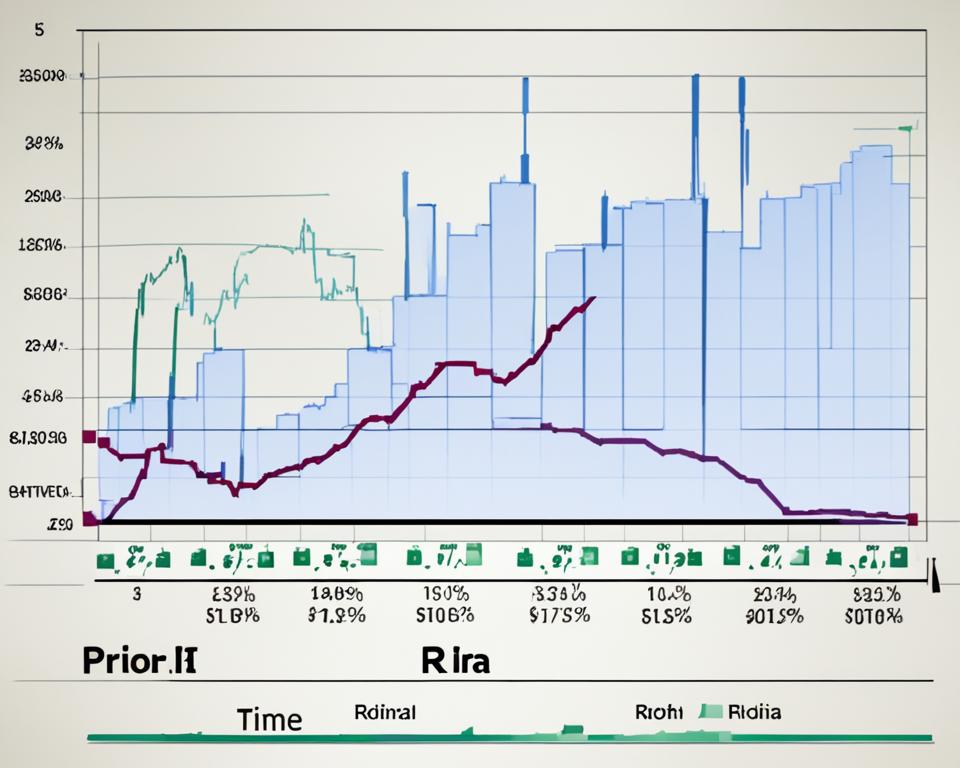Dividend stocks can be quite a fascinating subject for novices in the investing world. The concept is rather straightforward – dividend stocks are shares in companies that regularly distribute a portion of their profits back to the shareholders. The attraction lies in the fact that these stocks provide investors with a steady stream of income, something which can be an exciting prospect for beginners looking to dip their toes into the investing pool.
Some of the best dividend-paying stocks for beginners are those held by well-established firms. These firms have a history of steadily increasing their payouts, adding a layer of stability to an inexperienced investor’s portfolio. This stability makes dividend stocks an integral component of many low-risk investment strategies.
Moreover, when it comes to reinvesting dividends, the potential growth of an investment can significantly increase over time. Think of it as a snowball effect – a lump-sum investment, given enough time and the right circumstances – can grow dramatically, especially if dividends are reinvested instead of spent.
Key Takeaways
- Dividend stocks can provide a steady source of income.
- The best dividend stocks often belong to well-established firms with consistent payouts.
- Investing in a dividend stock adds stability to an investor’s portfolio.
- Reinvesting dividends significantly enhances the growth of an investment over time.
- As a beginner, investing in dividend stocks can be an effective part of a low-risk investment strategy.
Understanding Dividend Investing for Beginners
Dividend investing for beginners can feel like entering a maze of numbers and financial terms, but with the right guidance, it can turn into a profitable journey. Dividend investing involves purchasing stocks that offer dividends – these are regular payments made by a company to its shareholders from its profits. A crucial part of uncovering the best starter dividend stocks consists in understanding foundational concepts like the dividend yield and the importance of dividend growth rates.
So, what is a dividend yield? In simple terms, it’s the percentage of the stock price that gets paid out as dividends annually. If a stock priced at $100 per share pays $2 in dividends yearly, then its dividend yield is 2%. On average, the dividend yield among top performing dividend stocks can be approximately 12.69% – a substantial return, especially for beginners in the investment world.
“Dividends provide an income stream that can be taken as cash or reinvested to purchase additional shares of stock.”
Indeed, the flexibility of returns is one the key benefits that come with dividend investing. You can either take your dividends as cash, supplementing your regular income, or you could reinvest them to purchase more shares of the same stock, enabling your investment to grow over time.
An overlooked aspect of dividend investing is the kind of businesses that typically offer dividends. Generally, companies that consistently hand out dividends are more established and financially stable, providing beginner investors with an added layer of portfolio security.
In recognizing and understanding these key elements, beginners can build a strong foundation for their journey into dividend investing, improving their ability to navigate the investment space, and increasing their chances of reaping satisfying returns from their starter dividend stocks.
Evaluating High-Dividend Stocks for Portfolio Stability
High-dividend stocks offer investors, especially beginners, the opportunity to earn a higher income from their investments. Such stocks often provide a sense of stability within the portfolios and are associated with well-established companies having a track record of consistent dividend payouts.
The top dividend stocks for beginners come from various sectors, and each offers distinct advantages. Yield isn’t the only criteria to consider when choosing dividend stocks. Investors, more notably new ones, must perform careful evaluation of dividend sustainability. An excessively high yield may hint at potential risks.
| Company | Dividend Yield |
|---|---|
| Big 5 Sporting Goods Corp (BGFV) | 16.59% |
| Arbor Realty Trust Inc. (ABR) | 13.18% |
These are examples of high-yield companies, where Big 5 Sporting Goods Corp (BGFV) has a remarkable dividend yield of 16.59%, and Arbor Realty Trust Inc. (ABR) provides a yield of 13.18%. Picking the most desirable dividend stocks for new investors should involve a balance between high yields and sustainable dividends to ensure long-term stability and growth.
Best Dividend-Paying Stocks for Beginners
The journey to investing in the best dividend-paying stocks for beginners can be a challenging yet rewarding endeavor. Building a portfolio that not only generates a steady income stream but also aligns with long-term investment objectives requires critical evaluation and suitable selection. It is important to note that every investor’s financial position and risk tolerance differ, hence differing investment approaches. Below, we delve into essential criteria investors should consider when selecting their stock options.
Criteria for Selecting Beginner-Friendly Dividend Stocks
For beginners entering the world of dividend investing, the plethora of stocks available can be overwhelming. To simplify this process, it is crucial to focus on certain criteria to guide the selection process:
- Dividend Yield: The dividend yield conveys how much a company pays out in dividends each year relative to its stock price. A higher yield could mean a better return on your investment.
- Dividend Consistency: Companies that have a history of paying dividends consistently are often more reliable investment options.
- Dividend Growth Rate: A healthy dividend growth rate indicates that the company is thriving and can potentially increase dividends in the future.
It is essential to understand that a higher dividend yield doesn’t necessarily mean a better investment. In some cases, extremely high yields can be a red flag as they may not be sustainable in the long run. Instead, look out for companies with a manageable yield, which generally offers more stability.
Dividend Yields and Growth Rates Considered
Paying attention to the dividend yields and growth rates of potential stocks is an integral aspect of dividend investing. For beginners, the mid-range yielding stocks are often the best dividend-paying stocks for beginners since they balance between providing attractive income and maintaining the potential for share price appreciation. A stock that shows steady growth rates over the years may be more sustainable and rewarding in the long run.
In conclusion, venturing into beginner-friendly dividend stocks can be a win-win situation if well-executed. By paying keen attention to the identified stock criteria and considering time-proven indices like the S&P 500 or Russell 2000, beginners can enjoy a steady and more predictable income stream for many more years to come.
Dividend Stocks Vs. Dividend Funds: Analysing the Options
When starting their journey into dividend investing for beginners, two main avenues present themselves: dividend funds and individual dividend stocks. Each has its distinct advantages and potential drawbacks, offering investors different paths to income and growth within their beginner dividend portfolios.

Benefits of Dividend ETFs and Mutual Funds
Dividend ETFs and Mutual Funds hold a collection of dividend-paying stocks. They provide an excellent vehicle towards instant diversification. This spread of investments can significantly reduce the impact on your income if any single stock within the fund underperforms or decides to cut its dividends.
Direct Investment in Individual Dividend Stocks
On the other hand, investing directly in individual dividend stocks can offer potentially higher yields. This route may also entail lowered expenses since ETFs and index funds often charge annual expense ratios. Despite presenting a promising path to significant returns, this option does require more active investor involvement. Comprehensive research and vigilant management are crucial to ensure these investments align with their overall investment goals and risk tolerance.
Beginners in dividend investing need all the information they can get to make informed decisions. Both dividend funds and individual stocks have their place in a well-rounded portfolio, and the choice between them will largely depend on individual circumstances, preferences, and investment goals.
How to Research and Choose Dividend Stocks
Investing in dividend stocks can be a lucrative way to earn a steady and consistent income, if done thoughtfully and with an understanding of key investment metrics. For new investors seeking to navigate the financial landscape of dividend investing, understanding how to research and choose the right dividend stocks is crucial. From assessing dividend sustainability to understanding payout ratios and dividend histories, this section will guide you on the right path to making informed decisions.
Assessing Dividend Sustainability
When starting off with dividend investing, it is important to assess the sustainability of the dividends a company offers. Dividend sustainability reveals whether or not a company can continue paying and potentially increasing its dividends in the future. One way to assess dividend sustainability is to compare the dividend yields among similar companies. Generally, a company with a high dividend yield compared to its industry peers can sometimes signal financial stress.
Understanding Payout Ratios and Dividend Histories
The understanding of payout ratios and dividend histories plays an essential role in successful dividend investing. The payout ratio indicates the percentage of a company’s income allocated to dividends. It can be a crucial factor signalling whether the company is in a good financial shape. As a rule of thumb, payout ratios above 80% may suggest that a company’s dividends are not sustainable, while ratios above 100% could imply the company is borrowing to pay dividends. In addition to the payout ratio, an analysis of the company’s dividend history – including its consistency and growth – can provide a good indication about the firm’s future performance. This combination of analysis helps ensure successful long-term dividend investing.
| Company | Dividend Yield | Payout Ratio | 5-Year Dividend Growth |
|---|---|---|---|
| Microsoft | 3.05% | 38.9% | 10.2% |
| Apple | 1.2% | 22.5% | 10.4% |
| Visa | 0.53% | 22.1% | 20.2% |
| Johnson & Johnson | 2.54% | 64.5% | 6.8% |
| Procter & Gamble | 2.3% | 60.1% | 3.4% |
Remember, investing in dividend stocks involves careful research and thoughtful decision-making. As a new investor, it’s about understanding the right strategies, and the key metrics to analyze a company’s dividend payouts. Therefore, keep the facts presented here in mind when deciding how to invest in dividend stocks for a prosperous financial future.
Step-by-Step Guide to Investing in Dividend Stocks
Investing in dividend stocks can seem overwhelming for beginners. However, with the right guidance and tools, it can become an attainable goal. This section aims to provide a step-by-step guide on how to invest in dividend stocks, focusing on strategies suitable for investing in beginner-friendly dividend stocks.
The first step is to explore potential dividend-paying stocks. Today’s advanced technology provides numerous reliable financial sites and brokerage firms offering a comprehensive list of firms with solid dividend payment histories. Use these sites to hunt for potential investment opportunities.
After identifying the prospective stocks, embark on a meticulous evaluation process. This involves analyzing dividend yields, payout ratios, and dividend histories. A stock’s attractiveness as a dividend investment largely hinges on these three factors.
Dividend yield is the annual dividend payment divided by the stock’s price. It serves as a good initial screening tool when identifying potential investments. However, the highest yields might not always be the best investments. Payout ratios and dividend histories should also be scrutinized. A payout ratio over 80% or a history of inconsistent dividends might signal potential risk.
“High dividend yields require scrutiny—yields over 4% should be cautiously considered, and anything over 10% is potentially very risky.”
Decide on how much stock to buy based on portfolio diversification and risk tolerance. It’s prudent to spread your investments across different stocks to manage the risk. Also, tailor your investment amount to align with your risk tolerance level to ensure that you are comfortable with your investment decisions.
Lastly, to cement your planning, use tools like investment calculators for visualising the growth impact of reinvested dividends over time. This can help you gauge how your investments will perform in the future. It’s also essential to ensure that dividends fit well with your tax considerations and income bracket.
By following these steps, beginners can confidently take their first steps into the rewarding world of dividend investing.
The Risk and Reward Dynamics of Dividend Stocks

Dividend stocks offer an attractive blend of reward and risk for investors. These best starter dividend stocks can provide investors with a reliable income stream and potential for capital appreciation. However, like any investment, risks are involved.
One noteworthy risk the attractive high-dividend stocks bring is the possibility of a falling stock price or a payout ratio that exceeds profitability. This could result in the company slashing the dividends. Therefore, merely being lured in by the high dividend yields could be a slippery slope for investors who don’t assess the overall health and sustainability of the company.
“The quality of the dividend is just as crucial as the yield, therefore, it is essential to consider both when investing in dividend stocks.”
Vigilance while investing can be a great ally. It is important to note that high dividend yields might be attractive at first glance but could also indicate financial issues within the company. Hence, beyond the appealing dividends, it’s imperative to examine the company’s overall financial health and dividend sustainability. Armed with this vital information, investors can make calculated decisions that align with their investment goals.
- High-dividend stocks could indicate potential issues
- Payout ratio that exceeds profitability might lead to the company cutting the dividends
- The quality of the dividend is just as important as the yield itself
- Always consider the dividend’s sustainability and the company’s overall financial status
Therefore, while high dividend yields may lead investors to think they’ve struck gold, understanding the investment’s risks is important. In the end, cautious, informed investing in best starter dividend stocks is the key to long-term investment success.
Focusing on Blue-Chip Stocks for Reliable Dividends
In the vast realm of investing, one of the best dividend-paying stocks for beginners often includes blue-chip stocks. Typically, top dividend stocks for beginners are something they can rely on for steady returns, and blue-chip stocks perfectly fit this profile. To understand this better, let’s delve into what blue-chip stocks are and why they are an ideal starting point for beginners seeking regular dividends.
Blue-chip stocks represent shares in well-established, industry-leading companies. These companies have a strong record of financial stability and consistency in paying dividends over an extended period. Beyond just being industry leaders, these companies are typically characterized by their long-term stable earnings, which makes them a reliable option for consistent dividends. Examples of blue-chip companies include behemoths like Apple, Microsoft, or Johnson & Johnson.
One of the top categories of blue-chip stocks includes the ‘dividend aristocrats’. Dividend Aristocrats constitute part of the S&P 500 Index and are distinguished by their 25 consecutive years (or more) of increasing dividends. The consistency and reliability of these companies make them perfect candidates for beginner investors seeking regular revenue streams through dividends. This investor-friendly characteristic solidifies the argument for blue-chip stocks being among the top dividend stocks for beginners.
The table below outlines some examples of established blue-chip companies and indicates their committed approach to providing stable dividends over the years.
| Company Name | Dividend Yield* | Consecutive Dividend Increases |
|---|---|---|
| Procter & Gamble | 2.4% | 65 years |
| Johnson & Johnson | 2.5% | 59 years |
| Coca-Cola | 3.1% | 59 years |
*Dividend yield as of the end of 2024
In conclusion, blue-chip stocks, like those of multinational brands such as Procter & Gamble, Johnson & Johnson, or Coca-Cola, offer beginners the chance to earn consistent dividends over time. When looking for the best dividend-paying stocks for beginners, the surety of dividends from these blue-chip companies should make them a compelling consideration.
Tax Implications of Dividend Investments
When investing in beginner-friendly dividend stocks, one crucial aspect to bear in mind is tax implications. The tax treatment of dividend income can significantly affect an investor’s return. Typically, dividends received in taxable accounts become subject to income tax, which can have potential implications on the tax efficiency, especially affecting high-income investors.
Tax Efficiency of Dividend Stocks
It’s important for new investors to understand that the interest from a dividend stock becomes part of their taxable income, substantially impacting the net return from such investments. This is why high-income investors should consider the tax-efficiency of their investments, especially when investing heavily in dividend stocks.
Tax-Advantaged Investment Accounts for Dividends
However, a viable alternative for dividend stocks for new investors to consider are tax-advantaged retirement accounts like IRAs and 401(k)s. These types of accounts allow for the bypass of immediate taxation, as taxes are only applied upon withdrawal. Thus, the choice between individual dividend stocks and funds, as well as the type of account used for holding these investments can be greatly influenced by its tax implications.
The Power of Compounding Through Dividend Reinvestment
For those who are new in the stock market, one of the best starter dividend stocks strategies tends to be dividend reinvestment. When employed adeptly, this approach can significantly enhance your investment growth over time. So how does dividend reinvestment work?
Quite simply, dividend reinvestment involves using your dividend earnings to purchase more shares in the same company. This way, an investor enjoying dividends can easily increase their shareholding without spending additional capital from their pocket. Over numerous investment periods, this strategy tends to generate a compounding effect. In essence, the dividends you earn keep growing because they are generating their dividends, contributing to substantial growth of your investment in the long run.
To illustrate the compounding power of dividend reinvestment, let’s review a theoretical example. This example involves Company A, a dividend-paying entity that offers a 4% dividend yield annually and whose share price appreciates by 5% every year. We will consider an investor who starts with 1000 shares of Company A and holds onto the investment for 20 years.
| Year | Shares with Dividend Reinvestment | Shares without Dividend Reinvestment | Portfolio Value with Dividend Reinvestment | Portfolio Value Without Dividend Reinvestment |
|---|---|---|---|---|
| 0 | 1000 | 1000 | $100,000 | $100,000 |
| 1 | 1040 | 1000 | $105,200 | $102,000 |
| 20 | 2205 | 1000 | $533,490 | $265,330 |
As reflected in the table above, by the end of 20 years, the investor who employed the dividend reinvestment strategy would almost double the value of their holdings while owning more than twice the shares held by an investor who opted against dividend reinvestment. Hence, dividend reinvestment proves to be a gamechanger in wealth accumulation.
“The most powerful factor in the realm of investing is compound interest.” – Albert Einstein
New investors searching for the best starter dividend stocks should be keen to harness the power of compounding through dividend reinvestment. It is an excellent strategy for maximizing returns and growing an investment portfolio over the long-term. If appropriately executed, this approach guarantees a rewarding investment experience, particularly for beginners with a long-term perspective.
Creating a Diversified Dividend Portfolio for Beginners
Building a strong foundation for your investments is essential when starting your journey into the financial market. Your investments should be spread across various sectors to ensure stability and reduce potential risks. This practice, known as diversification, is particularly important when creating beginner dividend portfolios. In the context of developing a diversified dividend portfolio, there are two key strategies to consider: strategically mixing dividend stocks and funds, and allocating and rebalancing your portfolio.
Strategically Mixing Dividend Stocks and Funds
Investors who are just beginning their journey must pay attention to balance in their portfolios. Mixing dividend stocks and funds allows investors to gain exposure to a diverse range of sectors, thereby providing a defense against market volatility. This strategy ensures that income streams are not overly dependent on a single stock or sector. While individual stocks can provide higher yields, funds provide instant diversification, which can help to buffer against fluctuations in the market. Therefore, including both in your portfolio can optimize potential returns.
Portfolio Allocation and Rebalancing
The second critical step to diversify your portfolio involves a thoughtful allocation of your assets. The investor should decide how much of their capital goes towards dividend stocks and funds based on their risk tolerance, financial goals, and the market outlook. This allocation should be periodically reviewed and adjusted, a process known as rebalancing, to maintain the desired asset mix over time.
Building a diversified dividend portfolio is not a one-time task, but an ongoing process. It requires steady analysis and updates to keep aligned with changing markets, economic situations, and personal financial goals. Nevertheless, creating and managing a diversified dividend portfolio can help beginner investors build portfolio resilience and stability while establishing consistent income-generating assets for their future.
Conclusion
The path to learning how to invest in dividend stocks, especially finding the best dividend stocks for beginners, can be both a rewarding and educational experience. Achieving financial growth and solidifying an income stream is much more attainable when focusing on the best dividend-paying stocks aligning with an individual’s risk tolerance and investment goals. This approach not only provides steady earnings but sets the stage for substantial capital growth as well.
Arming oneself with knowledge about associated tax implications is equally important for a smooth investment journey. Being cognizant of both the immediate and long-term tax consequences holds great value and can directly influence investment return rates.
The best part? The power that lies in compounding through the reinvestment of dividends. This mechanism can significantly amplify the growth of an investment and deliver stellar value, making it especially fruitful for beginners with a long-term perspective.
Taking calculated steps towards building a diversified portfolio and consistently managing it can present beginners with a robust income-focused investment strategy, offering financial stability for years to come. The world of dividend investing is intriguing, abundant with opportunities, and rewarding when navigated wisely.
FAQ
What are the best dividend-paying stocks for beginners to invest in?
The best dividend-paying stocks for beginners often belong to well-established companies that have a reliable history of paying dividends. They should have an average dividend yield, a consistent dividend growth rate, and be part of notable indices such as the S&P 500 or Russell 2000. These stocks will typically have a manageable risk profile and align with a long-term investment strategy. Examples include blue-chip stocks and dividend aristocrats, which have reputations for stable earnings and consistent dividends.
What is dividend investing for beginners?
Dividend investing for beginners entails purchasing stocks that pay out dividends, which are regular payments made to shareholders from a company’s profits. Beginners should aim to understand key concepts such as dividend yield and dividend growth rates. Dividend investing offers an income stream which can either be taken as cash or reinvested to purchase additional shares of stock.
How can I evaluate high-dividend stocks for portfolio stability?
Evaluating high-dividend stocks for portfolio stability involves careful analysis of the dividend yield, payout ratio, and the company’s dividend history. A high dividend yield might indicate potential risks as it could suggest financial instability. Equally, a high payout ratio might also indicate potential strain, particularly if it’s above 80%, and above 100% could mean the company is borrowing to pay dividends.
How to research and choose dividend stocks?
When researching dividend stocks, it’s crucial to compare the dividend yields among similar companies and assess the sustainability of the payouts. Look at the company’s dividend history for consistency and growth. A high payout ratio might signal financial strain, and ratios above 80% or 100% could be a red flag.
How do I start investing in dividend stocks?
To start investing in dividend stocks, find potential dividend-paying stocks through financial websites or your broker. Then evaluate the stock by considering the dividend yields, payout ratios, and dividend histories. Determine how much stock to buy based on your portfolio diversification and risk tolerance. Consider using investment calculators to visualize potential growth due to reinvested dividends.
What are the risks and rewards of dividend stocks?
Dividend stocks offer a blend of rewards, such as a reliable income stream and potential for capital appreciation, with risks, such as high payout ratios and falling stock prices. High dividend yields might seem attractive, but they might also suggest problems. Factors such as these could lead to the company cutting the dividends. Hence, the quality of the dividend is just as crucial as the yield.
What are tax implications of dividend investments?
Dividends received in taxable accounts are subject to income tax. This could impact high-income investors’ tax efficiency. However, holding dividend stocks in tax-advantaged retirement accounts like IRAs or 401(k)s can bypass immediate taxation. Understanding these tax implications is crucial when investing in dividend stocks.
How can I create a diversified dividend portfolio for a beginner investor?
For beginners, a diversified dividend portfolio can be crucial in managing risk and optimizing potential returns. Consider strategically combining various dividend stocks and funds to achieve diversification. Regular portfolio rebalancing is necessary to maintain the desired asset mix over time.












